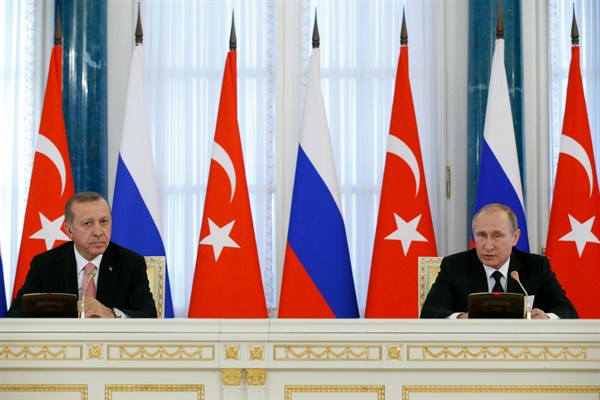Turkey and Russia are patching up their troubled relationship. In early August, Russian President Vladimir Putin met with his Turkish counterpart, Recep Tayyip Erdogan, in St. Petersburg, in the first face-to-face meeting between the two leaders in 10 bitter months since Turkey shot down a Russian jet that was briefly in its airspace last November. But after some symbolic handshakes and photo-ops, what can be expected in concrete terms moving forward between Ankara and Moscow?
Let’s start with the low-hanging fruit. It’s a safe bet that state-controlled media in Russia will no longer portray Erdogan and his close entourage with such vitriol. Since the Russian jet was shot down last year, the Kremlin has done its best to present Erdogan as the devil himself. Putin personally blamed Erdogan for profiting from illegal cross-border oil trade with the self-proclaimed Islamic State and called Turkey “accomplices of terrorists.”
Both leaders have also publicly committed to resume bilateral commercial and economic relations. How quickly things will be implemented is difficult to predict, but there are strong incentives to move things along fairly quickly, with both countries’ economies hurting. The Russians will consider lifting restrictions on Turkish companies with interests in the Russian market, while gradually removing sanctions on Turkish agricultural imports to Russia. Russian tourists should also now be returning to Turkey’s warm Mediterranean beaches in droves. In return, Erdogan has promised to facilitate two strategic energy projects: a nuclear power plant to be built by Russia, and the South Stream pipeline that would transport Russian natural gas to Turkey via the Black Sea.

